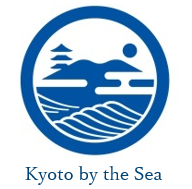Japanese Washi Paper Making
expert: Tango Washi Tanaka-san
Why washi paper making?
Japanese paper making has a very long history, but the number of washi makers in Japan has dropped drastically since the Meiji era. This is a beautiful heritage art, with a preparatory process that’s linked so closely to nature and the seasons. The creation stage itself is hypnotic and meditative. Washi paper is incredibly durable as well, some of which is said to last a thousand years. Will the paper outlast the tradition of paper making itself? This is definitely an art to be seen and tried in person. And while the time it takes to master the technique can often be a decade or more, visitors can still try to make their own, with the help of one of the paper experts of course.
Why washi paper in Kyoto by the Sea?
Of the numerous paper makers that once called the region home, only two remain. Both of these companies are prestigious and have been recognized as intangible cultural properties. One of the main reasons the area was such a hub of paper making is thanks to the plants needed to create the paper. Mulberry and oriental paper bush (two plants used as a base material for paper making) both thrive in this region, with its mountains and clean abundant water sources. This also explains one of the reasons why silkworms were cultivated so successfully here during the height of the silk industry, as mulberry is also a food source for silkworms. But comparatively, the process for washi making and silkworm raising are quite different. During a paper making tour, first visitors will learn about the labor-intensive process of preparing the mulberry for cultivation (without having to do any of it!). Afterwards, visitors can watch the experts at work to see how seemingly effortlessly they create the paper. Once visitors understand the process, they will be able to try for themselves. And for those who prefer the washi of the professionals, there is even a little time at the end to shop at their workshop galleries. Washi also makes an excellent gift as it is light and easy to carry in a suitcase!
About our paper maker
Tango Washi is a family run business in the foothills of the Oeyama mountains. Walking through the area, visitors will notice mulberry farms where Tango Washi grows their own mulberry (rare in Japan). Known for their excellent quality washi, they even do restoration work for some of the washi found in The Golden Temple in Kyoto. The are also one of only two companies making the thinnest paper in all of Japan, mainly used by lacquerware artisans for filtering lacquer. The owner, Tanaka-san carries on the family legacy, even taking the extra time to create a rare cloud dragon paper just because he believes in pursuing his artform to the fullest extent possible.
Where is this experience?
Looking to book this experience? Need more information? Let us know!



